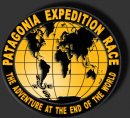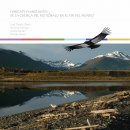 Since 2004, UMAG masters student Ximena Arango has worked in Puerto Williams to define and implement a “charismatic flagship” species that would promote conservation of old-growth forests in the Cape Horn Biosphere Reserve. Arango, a native of Columbia, early on identified the Magellanic woodpecker (Campephilus magellanicus) as a keystone species that was also very beloved and recognized by diverse social sectors of the local community.
Since 2004, UMAG masters student Ximena Arango has worked in Puerto Williams to define and implement a “charismatic flagship” species that would promote conservation of old-growth forests in the Cape Horn Biosphere Reserve. Arango, a native of Columbia, early on identified the Magellanic woodpecker (Campephilus magellanicus) as a keystone species that was also very beloved and recognized by diverse social sectors of the local community.
Arango used her scholarship from the Institute of Ecology and Biodiversity (2004-2007) to position this species as a symbol that motivates the local community to participate in conservation in the subantarctic archipelago. To date, her work has inspired a host of woodpecker-oriented activities, including: a municipal-sponsored drawing contest for school children, various art expositions, postcards, calendars, cloth bags, and presentations, among others. To consolidate this initiative and project it “from the South”, in June 2008 the Omora Park will offer a training course, led by Ximena, to teach this methodology to other conservation initiatives in the region and throughout Chile.
To learn more about how the Omora Park is working to implement charismatic flagship species for conservation see the recently published article in Magallania entitled: “Discovery and implementation of the Magellanic woodpecker (Campephilus magellanicus) as a charismatic flagship species for the Cape Horn Biosphere Reserve.” Download the pdf by clicking here (in Spanish with English abstract).








